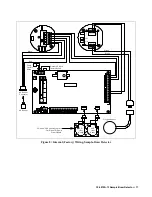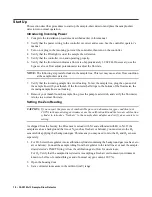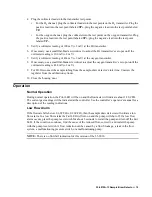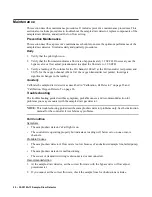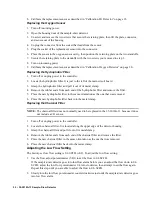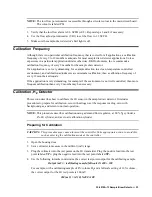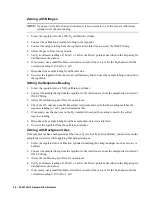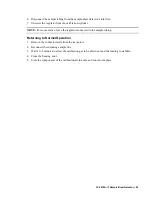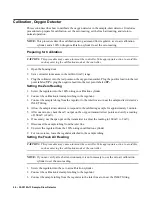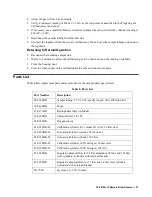
35-3010A-13 Sample-Draw Detector • 21
3. Verify that the sensor and transmitter wiring are correct and secure. “Wiring the Sample-Draw
Detector” on page 15 describes detector wiring connections.
4. Calibrate the problem channel or channels as described in the Calibration section.
5. If the fail condition continues, replace the sensor from the problem channel or channels as
described later in this section.
6. If the fail condition continues, contact RKI Instruments, Inc. for further instruction.
Slow or No Response/Difficult or Unable to Calibrate
Symptoms
•
Unable to accurately set the zero or response reading on one or more of the channels during the
calibration procedure.
•
One or more of the sensors requires frequent calibration.
NOTE:
Under “normal” circumstances, the sample-draw detector requires calibration once a quarter.
Some applications may require a more frequent calibration schedule.
Probable Causes
•
The calibration cylinder is low, out-dated, or defective.
•
The sample-draw detector’s flow rate is too low because of an obstructed sample line, failed pump,
etc.
•
The sample-draw detector is malfunctioning.
Recommended Action
1. Verify that the calibration cylinder contains an adequate supply of a fresh test sample.
2. If necessary, set the correct flow rate with the bypass valve or flow adjust potentiometer.
3. If you cannot set the correct flow rate, check the sample line for obstructions or kinks.
4. If the calibration/response difficulties continue, replace the sensor as described later in this section.
5. If the calibration/response difficulties continue, contact RKI Instruments, Inc. for further
instruction.
Replacing Components of the Sample-Draw Detector
This section includes procedures to replace the sensors, the hydrophobic filter, and the charcoal filter.
Replacing the H
2
Sensor
1. Turn off or unplug incoming power.
2. Unscrew and remove the two screws that secure the retaining plate, then lift the plate, connector,
and sensor out of the housing.
3. Unplug the connector from the sensor.
4. Verify that you are using the correct replacement sensor (TE-7560 printed on the sensor), then plug
the sensor into the connector.
5. Place the sensor in the H
2
sensor cavity, then position the retaining plate on the two standoffs.
6. Secure the retaining plate to the standoffs with the two screws you removed in step 2.
7. Turn on or plug in power.











